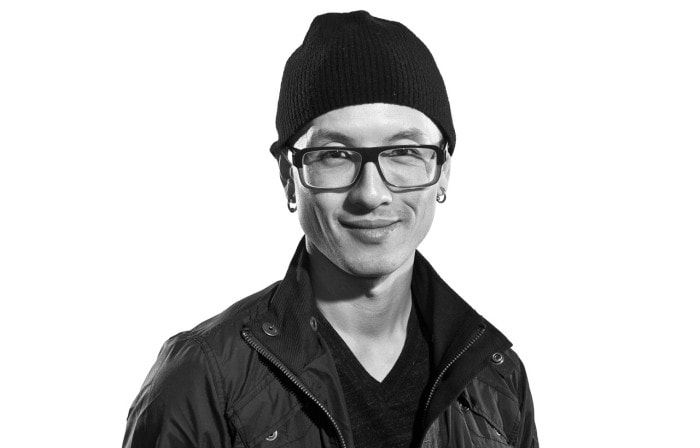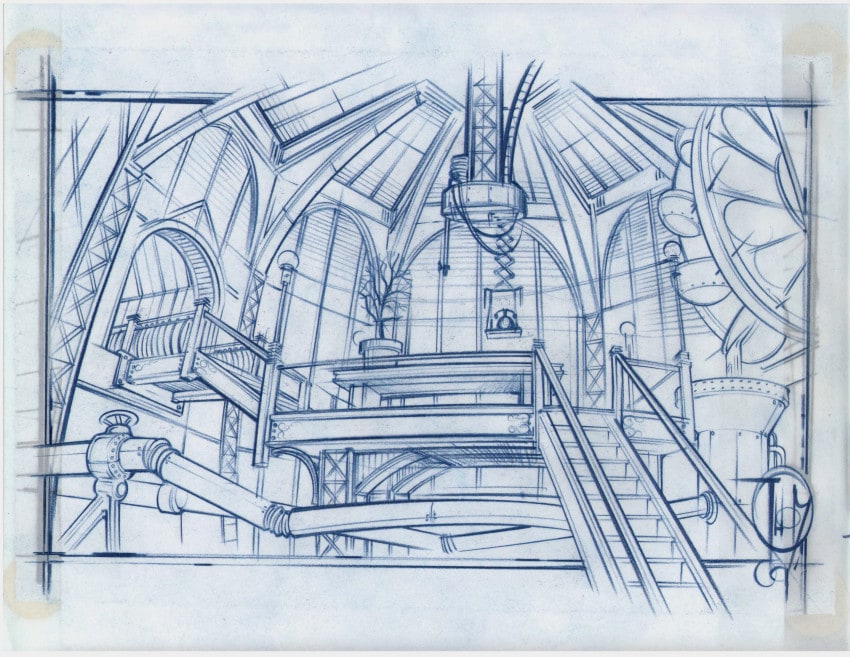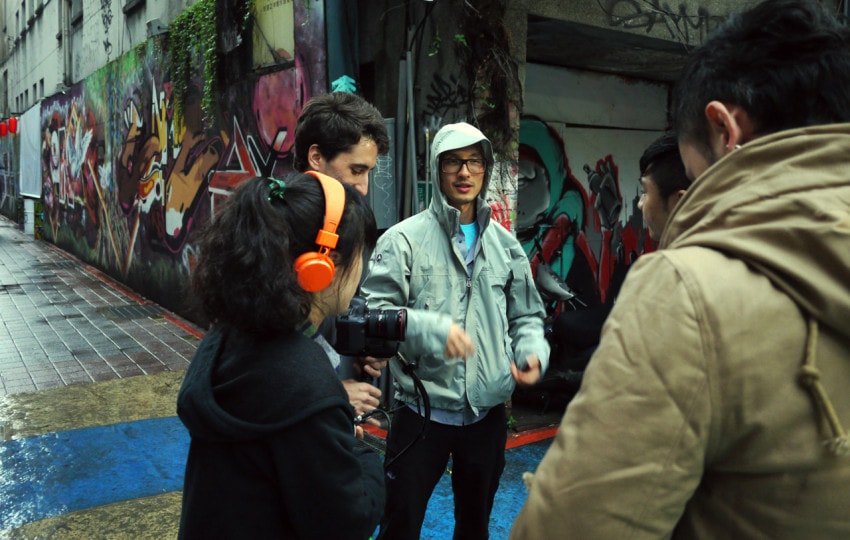Chris Do does not mince words.
As the founder of Blind, the influential LA-based studio that recently celebrated its 20th birthday, he has weathered good times and bad.

Blind founder, Chris Do
A tireless teacher, relentless entrepreneur and shrewd strategist, Chris shared some of the wisdom he earned from his time in the trenches. His thoughts on the industry — and its future — are honest and hard-hitting.
Q&A with Chris Do, founder of Blind
I didn’t realize Blind was founded in 1995. What was Blind doing back then?
At our inception, we were mostly print-based designers dabbling in motion design. (It wasn’t even a term back then.)
My introduction to motion came by two key events. Someone at Art Center recommended that I take the Cosa After Effects class, which I did, and immediately fell in love with the ability to manipulate and control “characters” over time.

Main title designer for “Eraser” (1996)
The other event came by introduction to Kyle Cooper, who was the creative director at RG/A LA. He had just finished the titles to Se7en and was blazing a trail in main title design.

Boards for “The Island of Dr. Moreau” (1996)
Those two events were the catalyst for my foray into motion design. So we made a critical decision to walk away from identity and web deign work.
When you started Blind, did you think you’d still be doing it 20 years later?
We didn’t have any grand plans. In fact, I thought it would be a fun idea to try running a company while we were still relatively young and unburdened by life. We named the company Blind, almost as lark to see how quickly we could go out of business.
Despite our best attempts, we got business and remained cash flow positive from the very beginning.
Blind’s collaboration with Robert Hales on the music video for Gnarls Barkley’s “Crazy” (2006) was a massive hit and is still referenced in boards today.
The challenge back then was trying to be seen as legitimate “directors” in an field dominated by traditional live action directors.
What was your vision for the company then?
The vision was to have fun, hang out with friends and do the best designs we could do. In the early days, overhead was really low (we worked out of loft in downtown LA) and the pay was decent. When we didn’t have any work, we’d just go watch a movie or have an early dinner.
It was a simpler time, and we had a blast! Friends and students would just drop in randomly to check out what we were doing.

Concept art for Ravonettes’ “Heart of Stone” music video
Has there ever been a time when you were ready to shut it all down?
Being in business for 20 years, we’ve had our ups and downs, both financially and emotionally.
Based on workflow, we’ve had to expand and then contract. It’s no fun when you have to start thinking about scaling back the company and saying goodbye to friends who you admire.
For the first 5 years, I don’t think I took any vacation days. So I was a prime candidate for burnout. I felt that with all these young, up-and-coming designers that I couldn’t contribute in the same way.
I took a 3-month sabbatical and taught at Otis. This break, along with teaching, completely rejuvenated me. I stopped doubting myself after that point.

On location for the Mtee “Havoc in Heaven” documentary
What keeps you going?
Some days, especially when business is down, it can be hard to stay motivated. The work and dedication doesn’t seem to add up, so the outlook can be rather dim.
In those moments, I try to focus on the positive aspects. I measure happiness by personal growth. So in these instances, I try to learn as much as possible about business, art, technology, fashion and other fields of study. This keeps me going, because learning new things turns me on.
Education has been a huge part of your life. Why is that?
The best way to learn is to teach.
I love teaching, because my students have taught me more than I’ve ever taught them. Most creative types work on an autonomic level, including myself. We don’t really think about what we do or why we do it. We do it because it feels natural to us.
Well, that doesn’t work if you’re a teacher.
Students will ask why you don’t like something or why something is “elegant” in your mind? It forces me to examine my decision making process and logic system.

Why is one design good while another is bad? Understanding and then explaining how I think is a form a self awareness that I would not obtain any other way. By understanding my own internal process, I’m able to think more clearly and react quicker. This is a pretty handy skill to have — especially if you’re a creative director, directing a shoot or troubleshooting with a client.
The best way to learn is to teach.
The other thing that teaching provides is the ability to hone in on a problem quickly, identify why it’s not working and then articulate that to a student in a way they can hear.
Instructors have to manage the energy and personalities of a diverse group. You have to have the ability to process and organize information very quickly. You have to learn how to listen and read body language and micro-expressions. I can tell when someone is uncomfortable, confused, day dreaming or not telling the truth.
Teaching requires me to research, read books and watch videos. I want to make sure that I’m not just making stuff up. If I have a theory on something, I want to research it to see if it’s based on any real data.

What advice can you give to people thinking of starting their own studio?
I would recommend doing it on your own. It can be comforting to work with someone else to share the pain, if you will. But take time to learn about yourself, likes and dislikes, work ethic, etc. before working with a partner of any sorts. More companies fail because owners don’t get along.
Finding someone else that perfectly complements you is really difficult. When you manage the relationship, it takes time away from doing the work, which is hard enough.
The second bit of advice is to do things on a small scale. Keep your overhead low, which will give you more latitude to pick and choose what you want to work on.
Do things on a small scale. Keep your overhead low, which will give you more latitude to pick and choose what you want to work on.
Use the downtime to work on personal development. Travel. Learn a new hobby. Or just relax. A bored mind is a creative mind.
Lastly, focus on providing a service that moves you up the value chain. VFX work is migrating overseas or to other countries, so it can be very challenging to remain competitive from a price point of view.
At some point, the work we do becomes very mechanical and is seen as a commodity. This will drive the value of what we do lower, so be mindful of this.
What’s your attitude toward studio growth/size? Is there a magic number of employees or an ideal rate of growth?
My opinion on this has changed over the years. Blind has been a company of 1 and as many as 20. There’s no magic number, but I think you should have as few employees as possible to get the work done without killing yourself.

Group shot behind the scenes for “Morgan Page Presents: MPP3d Concert Experience”
I now prefer partnerships and collaborations with others. An example of this is to team up with a specialist for a project. If we need someone who is an expert at CG product renderings, I think we serve our clients better by hiring the best company we can to do the work, even if it means that we’ll make less money.
Plus, this allows our directors to focus on other things besides managing a 3D pipeline.
How is the state of the industry changing?
Oh. This is the mother of all questions.
The motion industry in general is not moving towards a positive place. There’s downward pressure from agencies to produce work for less money. There are more and more companies popping up, so I feel that the market is very saturated. This means that supply is far outstripping demand.
Agencies, also feeling the financial pressure, are building in-house design and production departments. They can afford to pay top dollar for designers and animators because they’re saving on what a studio would charge for markup, direction and management. This doesn’t bode well for the independent shop.
There’s an erosion of what is considered quality work. Good enough is good enough.
More media channels continue to dilute budgets. Work is becoming more speculative in nature, i.e., creative teams asking studios to pitch on unsold ideas and requiring extensive development work done without pay.

Branding package for Beast Editorial
I say this not so much as a complaint or desire for the “good old days” but rather as objective observation. Things have changed. Notice I didn’t say changing but changed.
The future is about entrepreneurship and authorship. Designers must learn to create their own content, deliver it and become the network, content creator, advertiser and production company rolled up in one. Take a look at the success YouTubers have had in authoring their own content. They’re multi-millionaires and control their own content and make money even when they’re sleeping.
Because they command an audience, brands and advertisers are willing to pay. There is tremendous opportunity here, if we use the skills we apply for others and turn them towards ourselves.
There’s also opportunity in the UX/UI world since everything is becoming software. Designers who know web principles can excel if they are able to transition into different markets.






